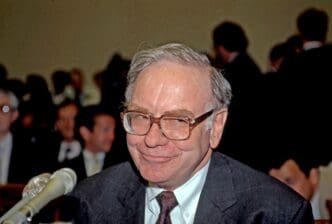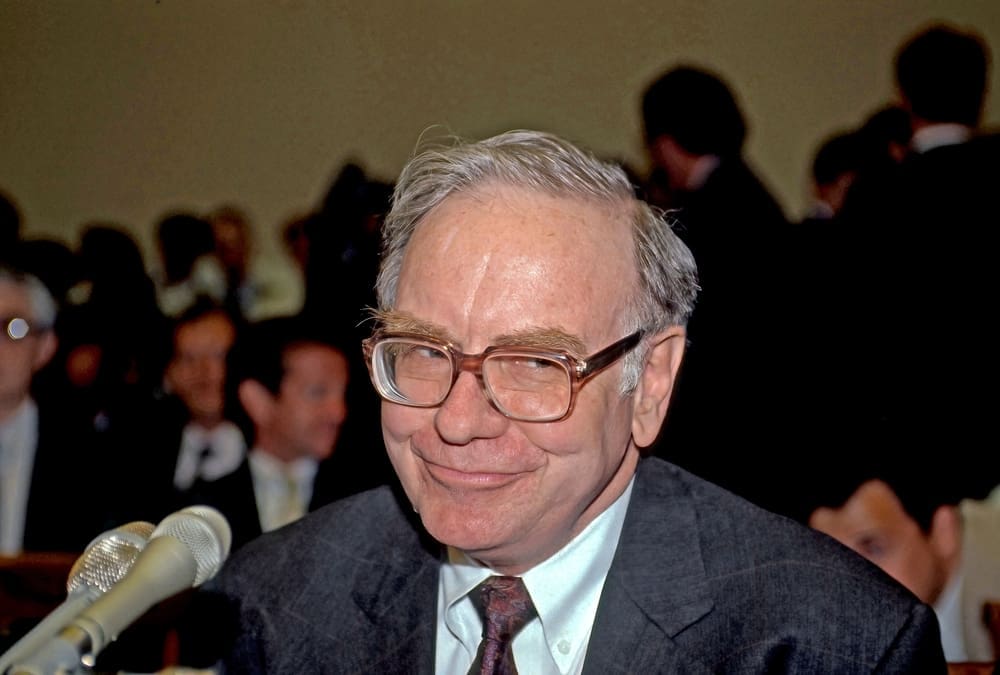In the world of finance, few figures cast longer shadows than Warren Buffett, the venerable chairman of Berkshire Hathaway, and Cathie Wood, the forward-looking founder of ARK Invest. Their clash represents more than just a competition between two successful money managers; it embodies a fundamental schism in investment philosophy that has defined modern markets. Buffett, the “Oracle of Omaha,” champions a time-tested strategy of value investing, seeking out durable, profitable companies at reasonable prices, a method that has built fortunes over decades. In stark contrast, Wood has become the face of disruptive innovation, betting aggressively on futuristic, often unprofitable, technology companies she believes will reshape the global economy. This ongoing debate between proven value and speculative growth offers a masterclass for every investor trying to navigate a complex and rapidly changing financial landscape.
The Oracle’s Doctrine: Buffett’s Value Investing Playbook
For over half a century, Warren Buffett’s name has been synonymous with investing success. His approach, honed at the feet of his mentor Benjamin Graham, is rooted in a simple yet profound concept: buying businesses, not trading stocks. This philosophy is built on a foundation of discipline, patience, and a deep understanding of business fundamentals.
The Pillars of Berkshire
At the heart of Buffett’s strategy is the principle of value investing. This involves calculating a company’s “intrinsic value”—what the business is truly worth based on its assets and future earning power—and then waiting for the opportunity to buy it at a significant discount, a concept Graham called the “margin of safety.” This discount provides a buffer against unforeseen problems or errors in judgment.
Crucial to determining that value is what Buffett famously termed an “economic moat.” A moat is a durable competitive advantage that protects a company from competitors, much like a real moat protects a castle. These advantages can take many forms, such as a powerful brand (Coca-Cola), a low-cost production model (GEICO), or a network effect that makes a service more valuable as more people use it.
Finally, Buffett strictly adheres to his “circle of competence.” He invests only in businesses he can thoroughly understand. For decades, this rule led him to famously avoid technology stocks, as he felt he couldn’t confidently predict their long-term trajectory. While he has since made a massive, successful bet on Apple, it was only after he came to view it less as a tech company and more as a consumer products giant with an incredibly powerful ecosystem.
A Portfolio Built on Bedrocks
A look inside Berkshire Hathaway’s portfolio reveals the application of these principles. It is dominated by mature, blue-chip companies with established market positions and robust cash flows. Holdings like American Express, Bank of America, and Coca-Cola are not headline-grabbing growth stories; they are pillars of the American economy that have demonstrated profitability for generations.
Even his largest holding, Apple, fits the modern Buffett mold. It possesses an immense brand moat, generates staggering amounts of free cash flow, and has a loyal customer base. His recent, significant investments in energy companies like Occidental Petroleum and Chevron further underscore his focus on tangible assets and predictable earnings, particularly in an inflationary environment where pricing power is paramount.
The Futurist’s Gambit: Wood’s Bet on Disruption
If Buffett is the market’s historian, Cathie Wood is its prophet. As the founder, CEO, and CIO of ARK Invest, she has pioneered a high-conviction, thematic approach centered entirely on what she calls “disruptive innovation.” Her philosophy eschews traditional valuation metrics in favor of betting on exponential growth curves and technological convergence.
The ARK Invest Philosophy
ARK’s strategy is not to find undervalued companies in the traditional sense, but to identify technologies that are poised to create entirely new markets or render existing ones obsolete. Her funds are not organized by conventional sectors but by “big ideas” like the Genomic Revolution (ARKG), Autonomous Technology & Robotics (ARKQ), and Fintech Innovation (ARKF).
Many of the companies in ARK’s portfolios are not yet profitable. Wood and her team argue that focusing on current earnings is shortsighted when assessing a true disruptor. Instead, they model a company’s potential based on its total addressable market and its ability to capture a significant share of it over a five-to-ten-year horizon. Their research often leans on concepts like Wright’s Law, which predicts that costs decline at a consistent rate as production doubles, suggesting exponential growth potential for innovators.
In a move that is the antithesis of Buffett’s relative secrecy, ARK practices what it calls “radical transparency.” The firm publishes its research online for free and discloses all of its daily trades, inviting public scrutiny and debate. This open-source approach has helped build a large and loyal following, particularly among younger, tech-savvy investors.
A Universe of Possibility and Volatility
The holdings in ARK’s flagship Innovation ETF (ARKK) read like a who’s who of high-growth, high-risk tech. Companies like Tesla, Zoom Video Communications, Roku, and Coinbase are at the forefront of their respective fields, but they also experience extreme stock price volatility. These are not the stable cash-flow generators Buffett prefers; they are bold wagers on the future.
This strategy’s performance has been a dramatic roller coaster. In the low-interest-rate environment of 2020, ARKK delivered staggering returns as investors flocked to growth stories. However, when inflation and interest rates began to surge in 2021 and 2022, those same stocks plummeted, as higher rates make distant, potential profits less valuable today. This boom-and-bust cycle perfectly illustrates the high-risk, high-reward nature of Wood’s investing style.
A Tale of Two Market Environments
The diverging fortunes of Buffett and Wood are best understood through the lens of the macroeconomic conditions that favored each. The period from 2020 to the present has provided a near-perfect case study in how different market regimes reward different strategies.
The Pandemic Boom: Wood’s Moment in the Sun
The COVID-19 pandemic created a unique economic cocktail: near-zero interest rates, massive government stimulus, and a “stay-at-home” economy that accelerated digital transformation. This was the ideal climate for Cathie Wood’s philosophy. With the cost of capital so low, investors were willing to pay a premium for future growth, and technology platforms that enabled remote work, e-commerce, and digital entertainment saw their valuations soar.
The Inflationary Backlash: Buffett’s Return to Form
Beginning in late 2021, the narrative shifted dramatically. Supply chain disruptions and soaring demand led to persistent inflation, forcing the Federal Reserve to embark on an aggressive campaign of interest rate hikes. This completely upended the market’s calculus. The “old economy” companies in Buffett’s portfolio—banks that benefit from higher rates, and energy producers with real assets—roared back to life. Conversely, the unprofitable tech darlings favored by Wood were crushed as investors fled from speculation toward the safety of tangible value and current profits.
Actionable Guidance for the Everyday Investor
The battle between Buffett and Wood is not just an academic debate; it offers critical lessons for anyone trying to build wealth. Rather than picking a side, the wisest approach may be to learn from both.
Lessons from the Oracle
From Buffett, we learn the timeless virtues of patience and discipline. He teaches us to focus on the long-term health of a business, not the short-term whims of the market. His insistence on understanding what you own is a crucial guardrail against speculation, and his focus on avoiding a permanent loss of capital is the bedrock of sustainable wealth creation.
Lessons from the Futurist
From Wood, we learn the importance of looking forward. While Buffett focuses on durable moats, Wood reminds us that technology can and will breach them. Her work highlights the immense potential for wealth creation that comes from identifying transformative trends early. Her conviction, backed by deep research, is a lesson in betting on a vision for the future.
Forging a Hybrid Path
For most investors, the optimal strategy likely lies somewhere in the middle. A popular and prudent method is the “core-satellite” approach. The “core” of your portfolio could be comprised of stable, Buffett-style investments: broad-market index funds or high-quality, dividend-paying stocks. This provides a foundation of stability and predictable growth.
The “satellite” portion can then be allocated to smaller, more speculative bets on the disruptive innovators that Wood champions. This allows you to participate in the potential upside of transformative technologies while limiting your overall risk. The exact allocation between core and satellite depends entirely on your personal risk tolerance, age, and financial goals.
Ultimately, the enduring contrast between Warren Buffett and Cathie Wood provides a powerful framework for financial thinking. Buffett invests with the certainty of history and the tangible value of the present, while Wood invests with the conviction of research and the exponential possibility of the future. Neither is definitively right or wrong; they are simply two masters playing different games on the same board. For the rest of us, understanding the rules of both games is the key to building a resilient and prosperous financial future.








